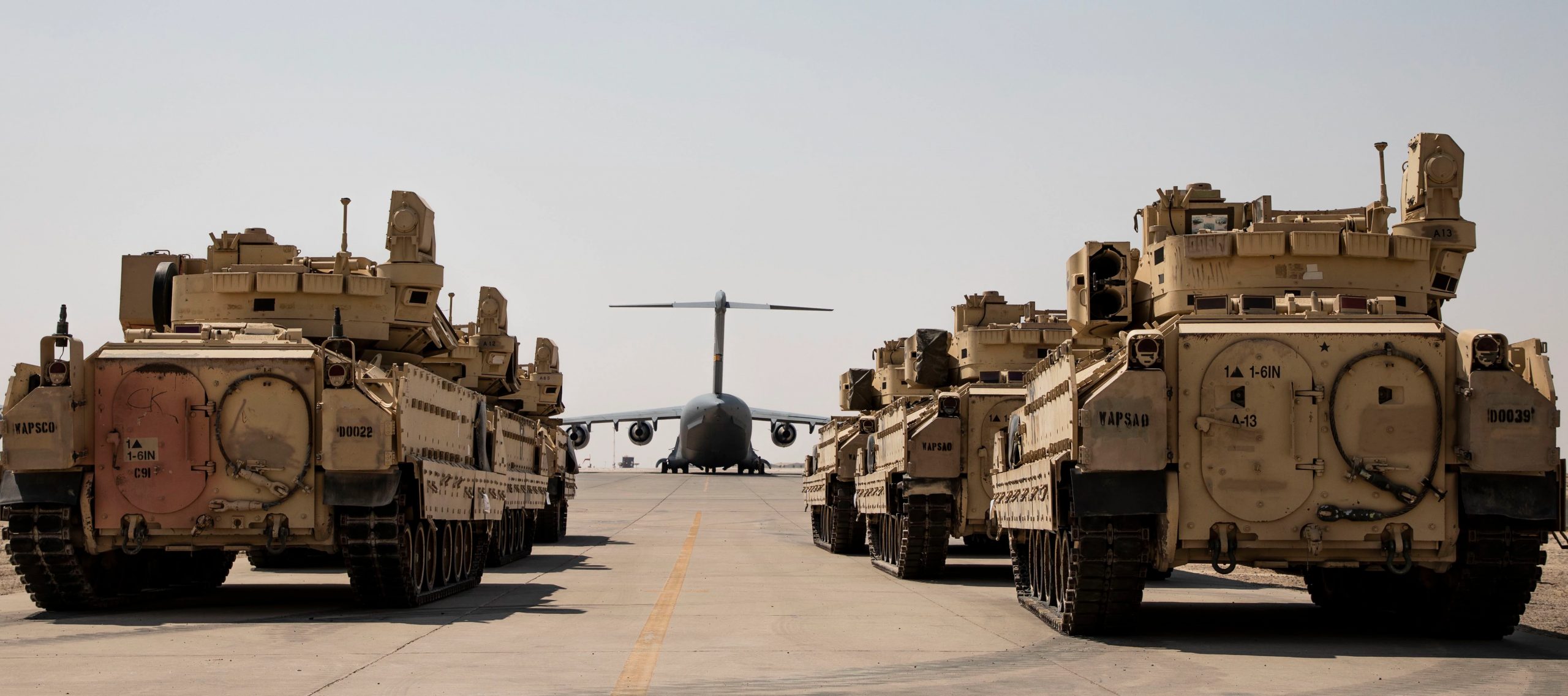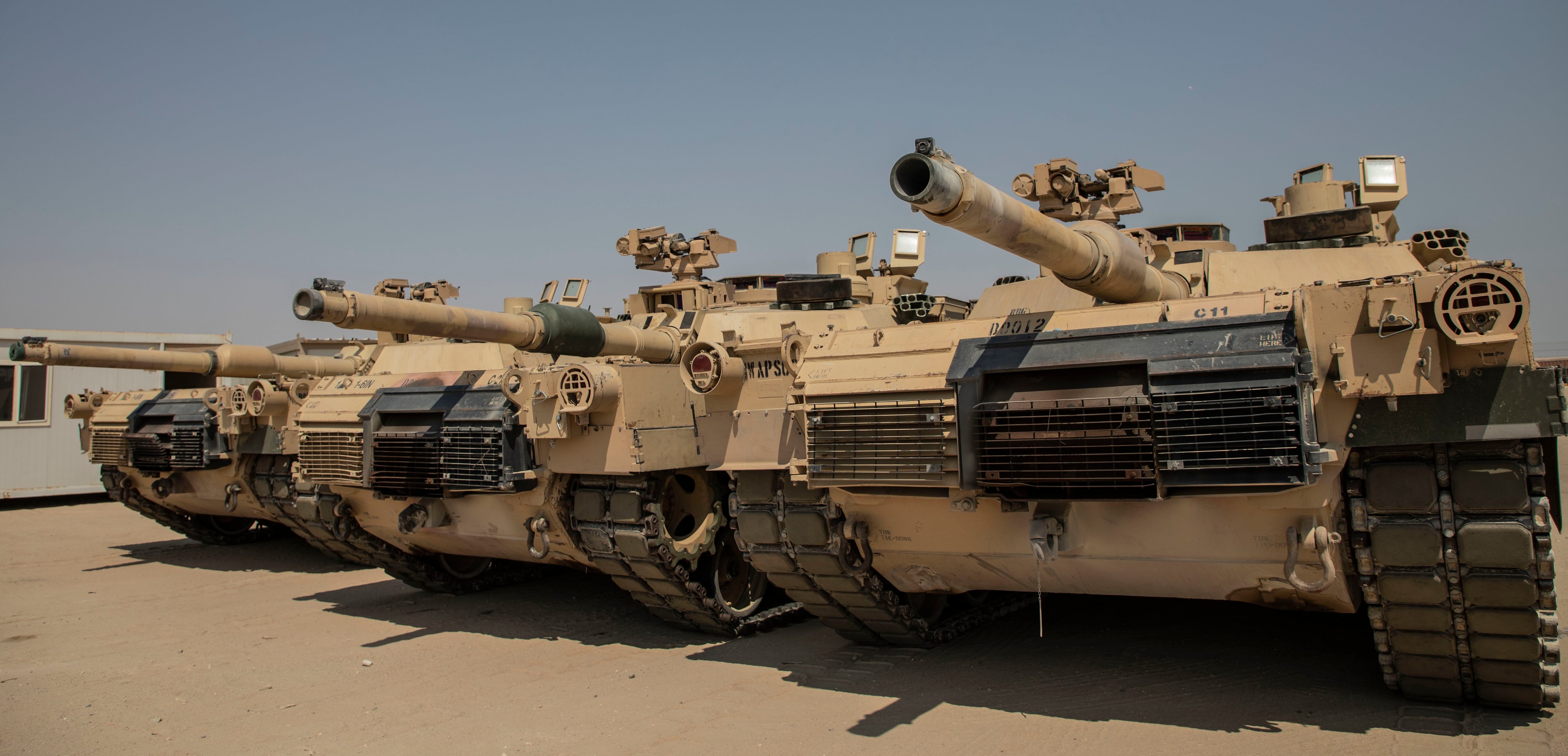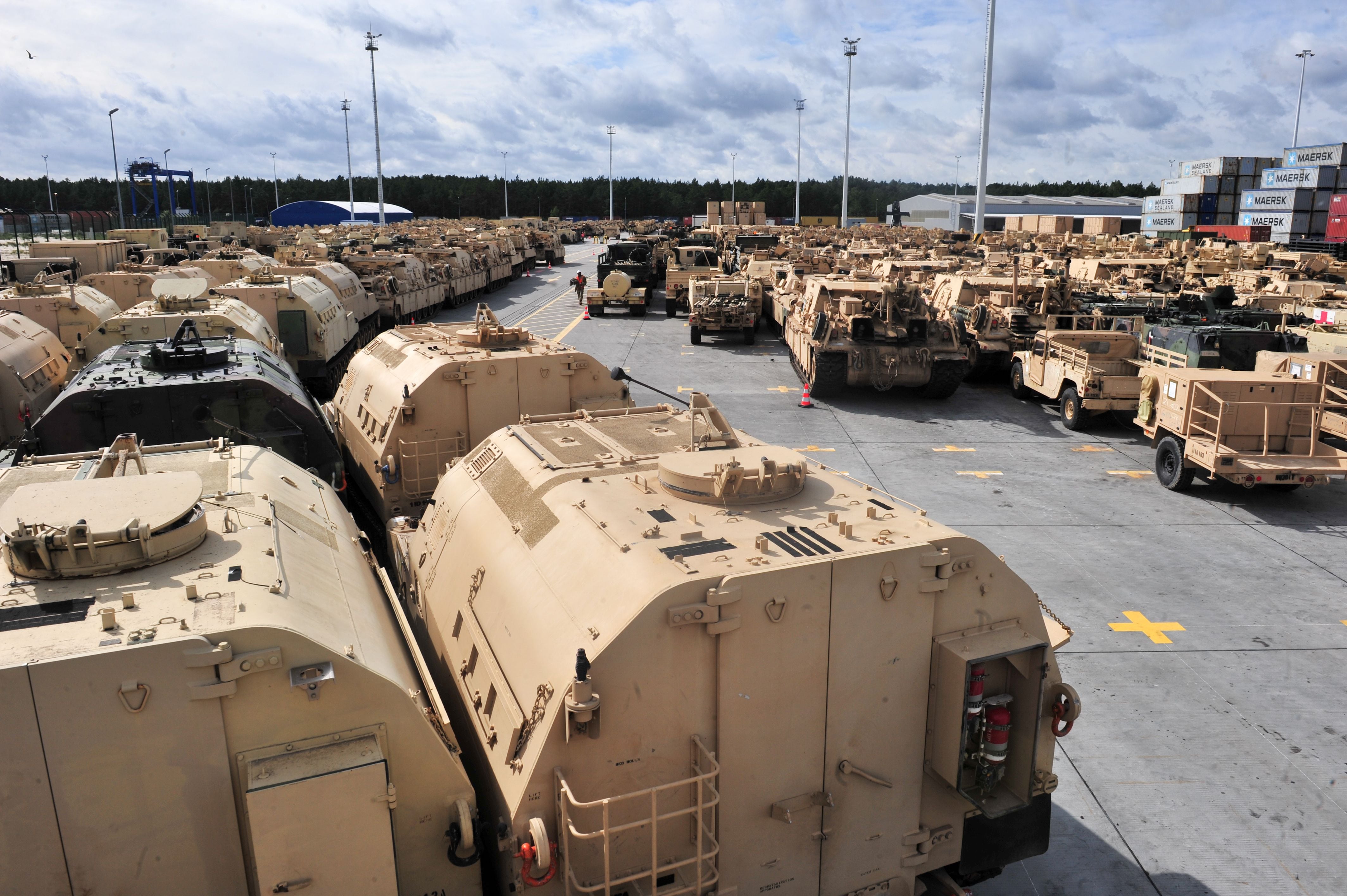
WASHINGTON, D.C. — The Army is taking a hard look at what kinds of units it commits to various regions as it sees demand rise for forces, specifically armor.
The service right now has three armored brigade combat teams in Europe, one in Korea and an armor asset from the Army National Guard in U.S. Central Command.
Chief of Staff of the Army Gen. James McConville spoke with journalists at the Defense Writer’s Group session, held by George Washington University on Thursday in Washington, D.C., on March 31.
Armor brigade workload may dramatically increase if Ukraine crisis holds
McConville declined to offer specifics on types of force packages, or units that might be deployed, saying that is a high-level policy decision currently under review.
But he did note the strain that back-to-back rotational deployments put on the armored brigades.
“To me, I like rotations once every four years,” McConville said.
Currently, they’re closer to one every three years.
That combatant command demand for armor units is pushing leadership to see where they can be flexible on what deploys, when and where.

Army Times reported last week from Fort Stewart, Georgia, home of the 3rd Infantry Division and the site of a recent rapid deployment of an ABCT to Europe amid the Russia-Ukraine crisis.
Sergeant Major of the Army Michael Grinston told an audience of soldiers and families at a public event that the Army needs nine ABCTs in its inventory for every three they need to deploy.
“Right now, we’ve got a contingency,” McConville said. “But we’re looking at the model and what’s best to do with that.”
The Army has 11 ABCTs in the active force and five in the Army National Guard. That’s after the service converted two brigades to armored brigades in recent years.
The standing commitment from the Army is one ABCT for Europe and another for South Korea, McConville said.
“We basically have 16 ABCTs,” McConville said. And it takes three to deploy one.
But that’s not the case for permanently stationed forces.
“If they’re stationed there, it’s one brigade,” he said. “If they’re rotational, it’s three brigades.”
But permanently stationed forces required the support and advocacy of the host nation along with additional stationing costs and considerations.
“The question becomes are they forward deployed permanently, do they take their families?” McConville said.
In 2018, Poland’s government officials offered to house Army units, and pay the bill amid tense discussions on increased NATO spending on defense.
That larger question — permanent or rotational — has been hotly debated for years in Army and other service circles.
At the height of the Cold War there were 350,000 U.S. soldiers stationed in Europe. That figure does not include other services.
Currently, even with three ABCTs and the 82nd Airborne Division deployed to Poland, there are only 40,000 soldiers on the continent, McConville said.
Back in 2018, congressional legislation sought an answer on whether the U.S. should put more troops permanently in Europe, both to deter Russian aggression on Europe’s eastern flank and to save transport costs.

Subsequently, the Army has forward stationed elements of its recently resurrected V Corps, which is now working as a liaison between U.S., German and Polish forces. Though the V Corps headquarters remains assigned to Fort Knox, Kentucky.
The Biden Administration’s fiscal 2023 budget request, released Monday, included $3.5 billion for the Pentagon to cover operating costs for the added 100,000 total troops in and around Europe, Defense News reported.
Assistant Defense Secretary for Strategy, Plans and Capabilities Mara Karlin testified to the House Armed Services Committee that the Pentagon would re-examine its Global Posture Review, in light of recent events.
“So, we’re looking at what sort of troop presence — whether it’s rotational or permanent — is necessary given this current security environment, both in the near term and frankly, and in the long term,” Karlin said.
Army Times asked McConville if there was talk of converting the South Korea commitment from an ABCT to a Stryker Brigade Combat Team.
The Chief deferred to policymakers at the Pentagon and White House for any decisions on the type or location of forces.
But, he noted, the current equipment prepositioning program has allowed units such as the ABCTs, to quickly enter the theater, fall in on their gear and be ready in days, not weeks.
“For us, the insurance policy is the prepositioned stocks of armor,” McConville said.
As those armored units deploy, they also must modernize.
Army Times recently interviewed soldiers with the 2nd ABCT, 3rd ID, at Fort Stewart, Georgia, about the new equipment they’ve received in recent months.
That new equipment included Joint Light Tactical Vehicles; M108A& Paladin howitzers; M2A4 Bradley Fighting Vehicles; M1A2 Sepv3 Abrams tank and testing on the Armored Multi-Purpose Vehicle.
McConville pointed to the “deploy-every-four-years” goal as key to modernization. Leadership must pull the units from the deployment pipeline to refit and retrain them, he said.
“That’s what the whole REARMM (Regionally Aligned Readiness and Modernization Model) is about,” he said.
The REARMM program aligned Army units with geographic locations while also lining them up to receive new equipment.
The model hits the active, Guard and Reserve units on various timelines. For active units they have about an eight-month phase of modernization and training before being back in the deployment chute, according to the 2021 Army statement.
It may be part of why 1st ABCT, 3rd ID deployed rapidly to Europe despite returning home from its South Korea rotation about six months ago.
That move was made instead of deploying 2nd ABCT which is in the middle of its reset ahead of a culminating training event in 2023.
